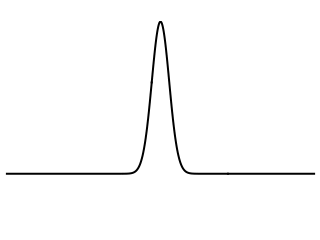Why do things spin?
I'm going to start with the barred masses in space example (#3) since that is the simplest. Also, instead of a continuous force from a rocket, let's consider discrete impulses, as if the bar was being hit by a hammer. In order to ignore torque, we have to look at what the bar material is actually doing to transmit the force to the masses.
So, we have two masses, $M$ and $2M$ at opposite ends of a bar. Imagine we tap the middle of the bar with the hammer. This creates a momentary deformation at the site of the impact. This deformation causes a wave pulse (more accurately, a stress wave) to travel in both directions along the bar, away from the point of impact. See below for an illustration:

Picture from: https://www.acs.psu.edu/drussell/Demos/Membrane-vs-String/Membrane-vs-String.html
Now, what happens when these pulses reach the masses? They will put equal forces on the masses since the waves are identical. So, the larger masses will accelerate more slowly and lag behind the lighter mass. The bar is stiff, so it doesn't change length, meaning that it must rotate for the larger mass to lag behind.
Now, if the bar is hit closer to the larger mass, the wave pulse reaches the larger mass first due to the shorter distance. So, the larger mass gets a head start to move ahead before the smaller mass catches up due to its larger acceleration. There's a whole analysis to be done here regarding reflected waves (see picture below) and the timing of such to get Newton's Third Law to work out and to show that the proper point to hit for no rotation is the same as that derived from torque equations.

From here: https://en.wikipedia.org/wiki/Wave_equation#Stress_pulse_in_a_bar
A continuous force can be thought of as an infinite sum of infinitesimally small discrete impulses. In other words, an extremely rapid series of very small taps that adds up to a given force. So, in case #2 with the wall mount and case #3 with the single rocket, imagine a rapid series of tiny impacts and we get the same result as with the hammer.
In summary, torque is an abstraction that allows us to ignore all these internal forces in the bar since, by Newton's Third Law, they always come in pairs and don't affect linear or angular momentum.
In case #1, where the barred mass assembly is dropped from an airplane (assumminmg no air resistance), the bar assembly does not rotate since gravity pulls on both masses in proportion to their masses, so they have the same acceleration.
The moment you introduce a pivot, you have to take into account the reaction force from the pivot - not just the weight of the boxes or the thrust of the rockets.
The applied forces acting on the boxes in both cases are equivalent to one force applied to the COM of the whole assembly.
So, if the pivot is aligned with the COM, the reaction force can completely cancel the applied force and prevent the acceleration.
If not, there would be a net (unopposed) force applied to the COM and, therefore, the assembly would have to accelerate, i.e., would have to start moving. But, since it cannot just move forward (translationally), ignoring the pivot, it will start spinning with the pivot point as the center of rotation.
In general, we can say that a body starts spinning, if one of its points (or a number of points located on the same line) is pinned and there is a force, applied to the body, which does not pass through that point or that line.